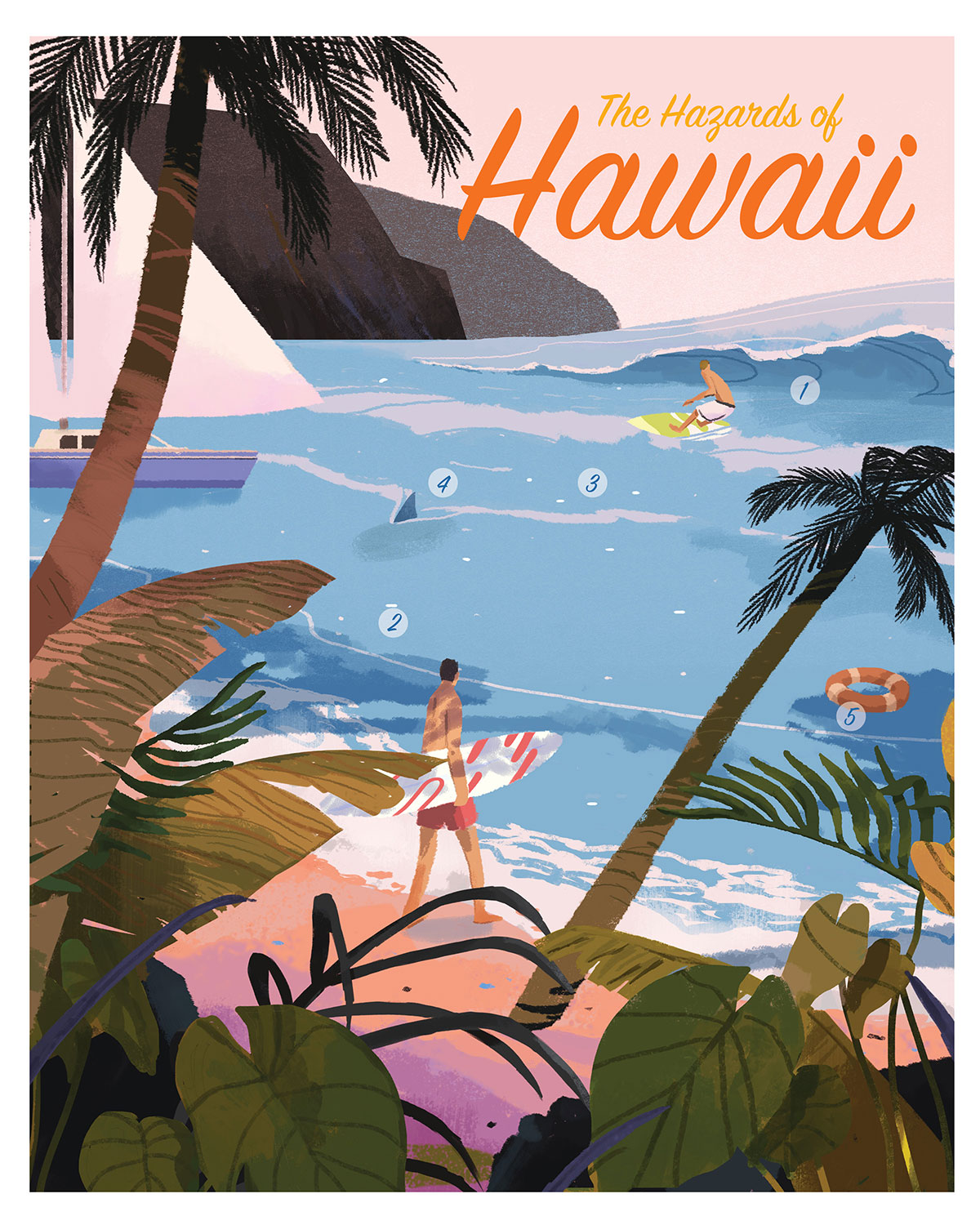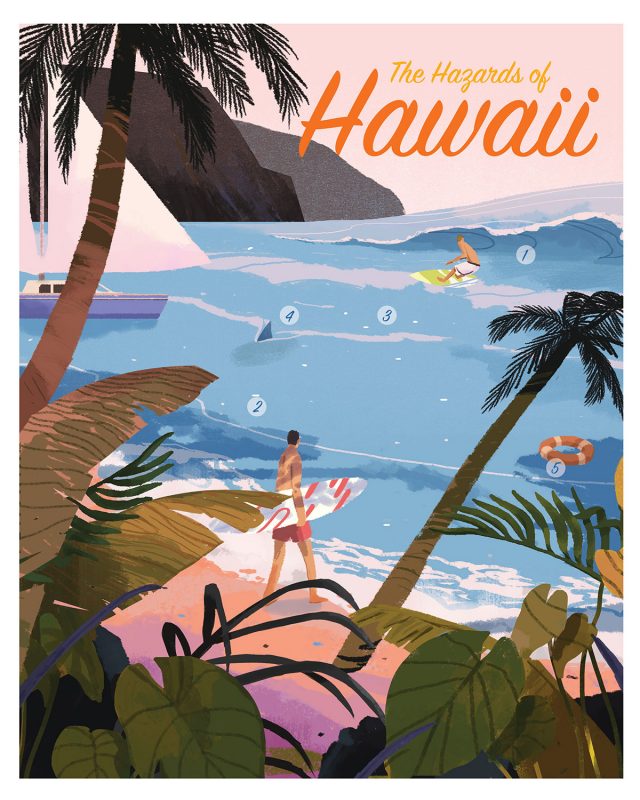The Hazards Of Hawaii

If you travel to Hawaii in search of surf there is a lot to know before you go. We asked Brian Keaulana of Hawaiian Water Patrol to identify common hazards that first timers overlook. Visitors, he said, frequently underestimate Hawaii’s dangers. “People are coming here to fulfill their fantasies and dreams and escape reality of everyday life. The warm weather, blue skies and rainbows. They see the beauty but don’t see the beast within the beauty.”
See if you can imagine the dangers in this picturesque scene. Hint: Some are hidden from view.

Illustration by Xiao Hua Yang.
(1) Plunging waves. Waves come in two varieties: spillers and plungers. The second is considerably more dangerous because the upper portion of the wave hurls forward as it breaks. These waves occur when deep water becomes shallow quickly, and that turbulence can cause a number of injuries. Pipeline is an extreme example of a plunger. “That’s what makes it so beautiful – the dangers.”
(2) Shallow Water. What most beginners do not realize is that waves break in water of a similar depth. So when the force of a 3 foot wave unfurls, it does so in just 3 feet of water. The lip of the wave can throw you against the ocean floor, which can cause serious spinal injuries if you land head first. “Most incidents happen when waves are under 3 feet.”
“People are coming here to fulfill their fantasies and dreams and escape reality of everyday life. The warm weather, blue skies and rainbows. They see the beauty but don’t see the beast within the beauty.”
(3) Coral Reef. Just several feet below the surface at Pipeline and other Hawaiian waves lies a rocky mass formed by lava and the animal known as coral. This reef – which can be flat, sharp or cavernous — is a deadly landing spot for surfers driven below the water by the force of the wave.
(4) Sharks. Most shark attacks happen in October as fish come closer to shore to give birth and feed. Heavier rains in the fall wash dead animals down from the mountains and sharks like to feed on those carcasses. Keaulana advises surfers to stay away from river mouths or harbor entrances, popular gathering spots for sharks. “The ocean is not a swimming pool,” he said. “When it rains and it’s murky we don’t go out.”
(5) Unpredictable Currents. “Our currents are real brutal if you don’t know what you are doing. A guy went out nighttime diving. He wasn’t that far out. Once you get into the current lines just offshore you can get sucked out to sea. We searched for him. On the fourth day we found his body 100 miles away.”